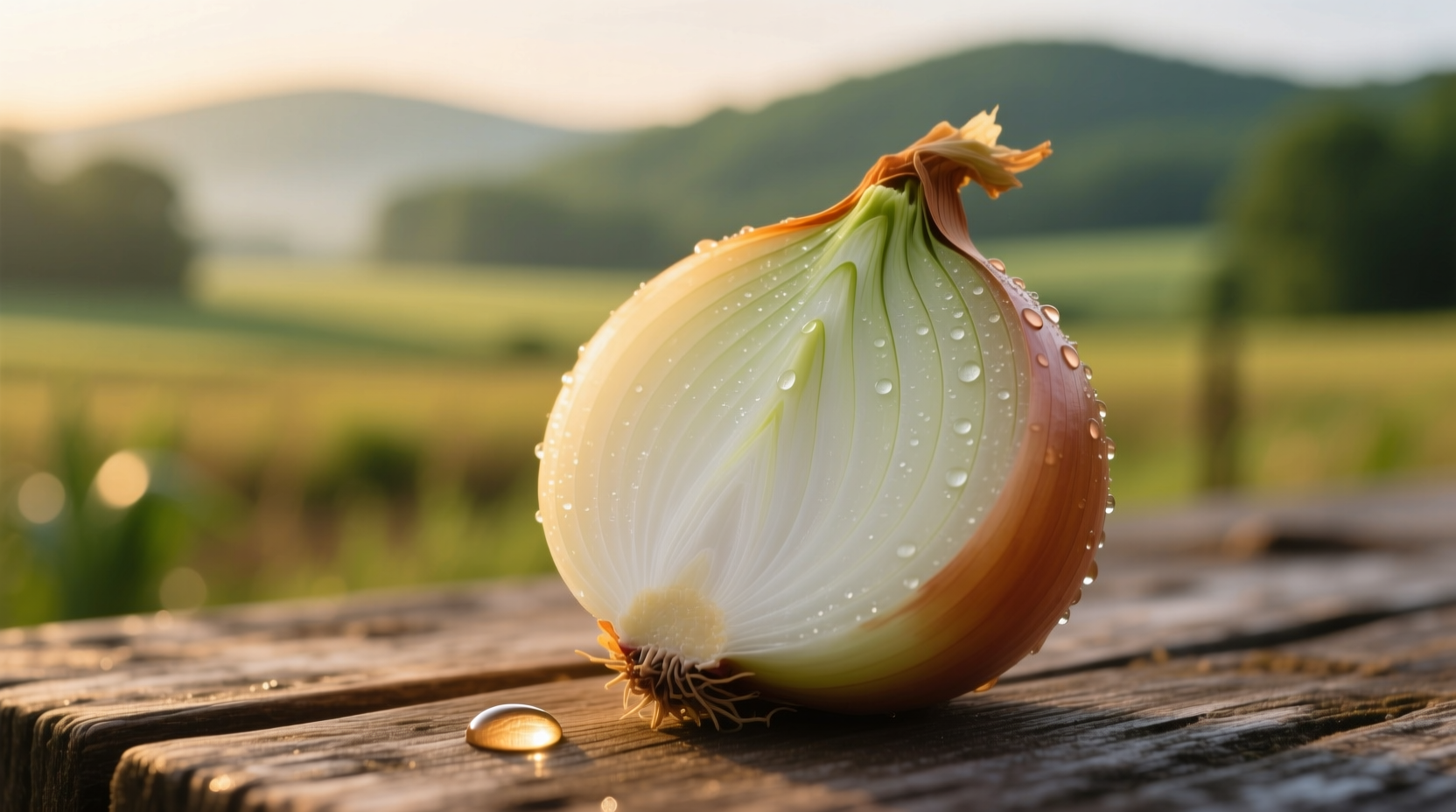Discover why professional chefs reach for Vidalia onions when creating dishes requiring subtle sweetness without overpowering bite. Unlike standard yellow onions with pyruvic acid levels of 8-10 micromols, Vidalias' unique sulfur-deficient soil composition produces onions that can be eaten raw without causing tears—making them perfect for salads, sandwiches, and fresh salsas where traditional onions would dominate.
The Protected Identity of Georgia's Sweet Treasure
What separates Vidalia onions from other sweet varieties isn't just taste—it's legal protection. Since 1986, the USDA Marketing Order has mandated that only onions grown in Georgia's designated 20-county region can bear the Vidalia name. This geographical indication functions similarly to Champagne or Parmigiano-Reggiano, protecting both producers and consumers from imitations.
| Onion Type | Pyruvic Acid Level | Soil Sulfur Content | Best Culinary Use |
|---|---|---|---|
| Vidalia | <5.0 micromols | Very low | Raw applications, quick sautés |
| Walla Walla | 5.5-6.5 micromols | Moderate | Grilled, roasted |
| Yellow Storage | 8-10 micromols | High | Long-cooked dishes, caramelizing |
From Small Town to Culinary Icon: A Historical Timeline
The Vidalia story began accidentally in 1931 when farmer Mose Coleman planted onions in Toombs County, Georgia's unusually low-sulfur soil. What emerged wasn't the pungent bulbs he expected, but remarkably sweet onions that quickly gained local fame. Key milestones include:
- 1944 - First Vidalia Onion Festival celebrates the unique crop
- 1986 - USDA establishes federal marketing order protecting the name
- 1989 - Georgia state legislature designates Vidalia onion as official state vegetable
- 2011 - Receives USDA certification mark for enhanced protection
- 2023 - Record harvest of 16,500 acres yielding over 1.2 billion pounds
Spotting Authentic Vidalia Onions at Market
With imitation "sweet onions" flooding markets, knowing how to identify genuine Vidalias prevents disappointment. Look for these verification markers:
- The official Vidalia onion logo branded on each sack
- Harvest date between April 1 and September 30 (the official season)
- Round shape with flat tops (unlike elongated Walla Wallas)
- Pale golden skin with minimal neck development
"Many retailers sell onions labeled 'Vidalia-style' during off-season months," explains agricultural specialist Dr. Rebecca Thompson from the University of Georgia. "These lack the distinctive low-acid profile because they're grown outside Georgia's sulfur-deficient coastal plain region."

Maximizing Flavor: When to Use Raw vs. Cooked
Vidalia onions' delicate flavor profile requires different handling than standard onions:
Raw Applications (Peak Flavor)
- Thinly sliced in burgers and sandwiches
- Quick-pickled for tacos and fish dishes
- Finely diced in fresh salsas and relishes
- Shaved raw in salads (try with pecans and goat cheese)
Cooking Considerations
Unlike pungent onions that mellow when cooked, Vidalias can lose their distinctive sweetness with prolonged heat. For best results:
- Limited sautéing (3-5 minutes maximum)
- Add toward the end of cooking processes
- Avoid slow caramelization (they'll burn before developing complex flavors)
- Try grilling whole bulbs for 8-10 minutes for concentrated sweetness
Seasonal Availability and Storage Guide
Vidalia onions follow strict seasonal patterns due to their geographical constraints:
- April-May: Early harvest - mildest flavor, shortest storage life (2-3 weeks)
- June-July: Peak season - optimal balance of sweetness and storage capability (3-4 weeks)
- August-September: Late harvest - slightly stronger flavor, longest storage (4-6 weeks)
Proper storage extends freshness:
- Keep in mesh bags in cool, dark place (not refrigerated)
- Avoid plastic bags which trap moisture and accelerate spoilage
- Never store near potatoes which emit ethylene gas causing premature sprouting
- Check weekly and remove any showing soft spots
Three Chef-Approved Vidalia Recipes
Vidalia Onion Dip (No Cooking Required)
Combine 2 cups finely minced raw Vidalia, 16oz sour cream, 8oz cream cheese, 2T chopped chives, and 1t garlic powder. Chill 2 hours before serving with pita chips. The onions' natural sweetness balances the tangy dairy perfectly.
Grilled Vidalia Steaks
Cut onions crosswise into 1-inch slices, brush with olive oil, and grill 4 minutes per side. Serve with balsamic reduction and fresh thyme. The quick cooking preserves sweetness while developing subtle char notes.
Vidalia Onion Jam
Sauté 4 cups sliced Vidalias in 2T butter over medium-low heat for 15 minutes. Add 1/2 cup apple cider vinegar and 1/2 cup brown sugar, simmering until thickened (about 25 minutes). Ideal with roasted meats or cheese boards.
When Vidalias Aren't Available: Smart Substitutes
During off-season months (October-March), these alternatives provide similar sweet profiles:
- Walla Walla Sweet (May-September): Grown in Washington's low-sulfur soil, slightly more pungent but excellent grilled
- Corno di Toro (Year-round): Italian sweet pepper-shaped onion works well raw
- Texas Sweet (November-January): Shorter season but good raw application substitute
- Boiling Onions (Winter): Smaller varieties with naturally lower sulfur content
Remember that no substitute perfectly replicates Vidalia's unique chemical profile. "The magic happens in Georgia's specific combination of low-sulfur soil, climate, and proprietary varieties like Yellow Granex 33," notes University of Georgia horticulture research. "Other regions simply can't duplicate the exact growing conditions."











 浙公网安备
33010002000092号
浙公网安备
33010002000092号 浙B2-20120091-4
浙B2-20120091-4